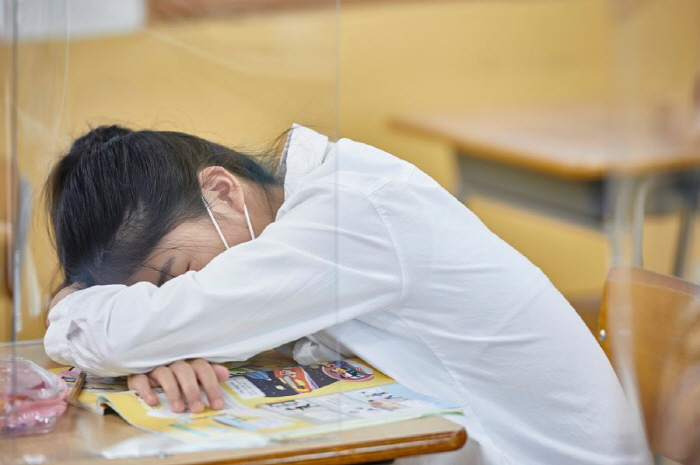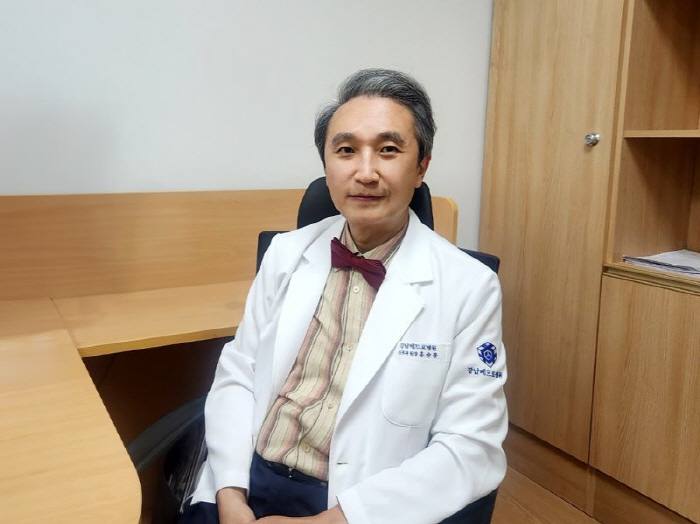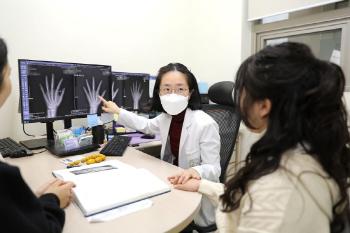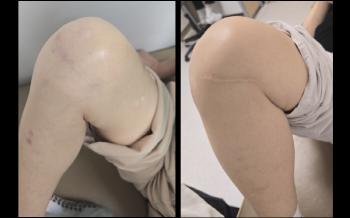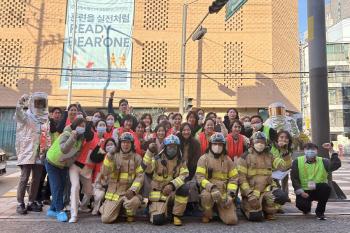A kid dozing off at school even though he slept for 10 hours...It wasn't lazy, it was a disease
|
Sleep disorders are common diseases experienced by about 20% of the population. In particular, sleep disorders are increasing in the modern society where stress is increasing. Among them, 'hypersomnia' of excessive sleep has been steadily increasing since 2019.
According to statistics from the Health Insurance Review and Assessment Service, the number of patients with hyper-sleep disorder exceeded 2,000 for the first time in 2022, and increased to 2,583 in 2024. In particular, it should be noted that there are many cases of excessive sleep disorder diagnosed by adolescents and young people from their teens to their 20s.
However, there are not many cases of accurately recognizing this and visiting hospitals. This is because it is easy to be simply regarded as a sleepy constitution unless it is a symptom of type 1 narcolepsy that causes sudden exhaustion (a sudden loss of body strength) when laughing or experiencing severe emotional changes.
Director Hong Seung-bong of the Department of Neurology, who leads the Korea Center for Epilepsy and Sleep at Gangnam Bedro Hospital, said "If you don't feel refreshed after sleeping for a long time, if you feel sleepy during the day, have too difficulty waking up, or feel chronic fatigue, you should suspect 'Idiopathic Hypersonia'" or narcolepsy." he explains.
In particular, idiopathic hyper-sleep disorder of any cause is inconvenient in daily life because it is too sleepy during the day and difficult to wake up in the morning, even if you sleep enough at night.
In particular, in the case of idiopathic excessive sleep, whose cause is unclear, it is not easy to wake up in the morning even if you are sleepy excessively during the day and sleep enough at night, causing inconvenience in your daily life. They sleep more than 10 hours a day, and in severe cases, they sleep 15 to 20 hours. Therefore, it interferes with adolescents who need to focus on their studies, and there is a high risk of causing drowsy driving and safety accidents. Therefore, accurate diagnosis and treatment by a specialist with extensive experience in sleep treatment are essential.
◇If you are sleepy during the day for no reason, you are suspected of having excessive sleep
The most common cause of daytime sleepiness is chronic sleep deprivation, and sleep apnea is the second most common cause in adults. If you are sleepy and tired during the day even though you do not have chronic sleep deprivation and sleep apnea, you should suspect excessive sleep. Hypersleeping is largely divided into narcolepsy and idiopathic hypersleeping. In addition, narcolepsy is divided into type 1 narcolepsy accompanied by daytime drowsiness and degeneration, and type 2 narcolepsy with only daytime drowsiness.
It is difficult to distinguish between idiopathic hyper-sleeping disease and type 2 narcolepsy, whose cause is unclear, because many symptoms overlap.
Hong Seung-bong, director of the Department of Neurology at Gangnam Bedro Hospital, explained, "Unlike type 1 narcolepsy, type 2 narcolepsy causes severe daytime drowsiness and REM sleep more than 2 times out of 5 naps per week without any exertion." "The sleep time per day is too long and daytime drowsiness is severe, but if the sleep test does not meet the narcolepsy criteria, it is diagnosed as idiopathic hyper-sleeping disorder, which is not easy to distinguish from type 2 narcolepsy." Director Hong then said "The cause of daytime sleepiness is often caused by two or more sleep disorders, so be careful."," he said.
Unlike type 1 narcolepsy, which is caused by a deficiency of neurohormone (hypocretin), which promotes arousal, idiopathic hyper-sleeping has literally no clear cause. Family history, brain histamine, GABA (inhibitory brain hormone), circadian rhythm changes, and autoimmune abnormalities have been pointed out, but no clear cause has yet been identified.
Adolescents tend to be accompanied by 'Sleep phase delay disorder', which delays sleep and wake-up time compared to normal due to disturbances in circadian rhythm caused by irregular sleep habits.
In the case of idiopathic hyper-sleeping disorder, unlike narcolepsy, which shows dramatic daytime sleepiness symptoms (such as falling asleep while eating, walking on the street, etc.), it is highly unlikely to be recognized as a disease. Symptoms such as chronic drowsiness and gradually worsening drowsiness appear gradually, and it is easy to be mistaken for a problem of individual will and laziness. However, if it is left unattended, not only will it affect studies and work due to drowsiness, perception, and decreased concentration, but it will also cause various inconveniences such as safety accidents and deterioration of daily functions due to drowsiness.
Director Hong Seung-bong emphasized that " idiopathic hyper-sleeping disease requires precise examination and diagnosis, especially through professional medical staff with abundant clinical experience", and that "symptoms can be sufficiently improved through patient-specific diagnosis and treatment".
◇ Detailed diagnosis is possible with multiple overnight sleep tests
In order to diagnose polysleep disorders, it is important to first check the symptoms of sleep time per day and daytime sleepiness through examination. Ask about the degree of drowsiness during the day, snoring, sleep habits, and daily discomfort caused by excessive sleep, and write a sleep diary or conduct blood tests if necessary.
The most detailed test for sleep disorders is the night sleep polygraphy (PSG). It is a test that closely monitors symptoms during sleep while actually sleeping in the test room. Monitor brain and body signals such as EEG, pupil movement, electrocardiogram, muscle tension, breathing and breathing volume, chest-abdominal movement, blood oxygen saturation, and leg movement to observe and measure abnormal sleep patterns such as sleep quality, arousal frequency, sleep apnea frequency, respiratory movement, oxygen saturation reduction, and abnormal behavior during sleep.
If daytime sleepiness is severe or narcolepsy or excessive sleep is suspected, a weekly multiple sleep complex test (MSLT) is also performed to test the degree of daytime sleepiness and the appearance of REM sleep in five naps.
At this time, if the average sleep incubation period is short, less than 8 minutes, and if REM sleep occurs more than two times, it is diagnosed as narcolepsy, and if there is no REM sleep or only one time, it is diagnosed as idiopathic hyper-sleep disorder. For the diagnosis of idiopathic hyper-sleep disorder, sleep time per day is measured through sleep tests or activity records for 24 hours. If you sleep more than 11 hours during the 24-hour test, you will be diagnosed with idiopathic hyper sleep disorder. Patients with idiopathic hyper-sleep disorder usually sleep 12 to 14 hours a day, and it is very difficult to wake up on their own without external stimuli.
However, for accurate examination and treatment, the treatment of a sleep medicine expert is essential.
In particular, it is very important to have an environment in a laboratory where you can sleep well enough during a multi-night sleep test. This is because if the inspection time is not sufficient, problems may arise in the quality of the inspection. If you go to sleep too early or wake up too early to finish the test, it may cause misdiagnosis as it is difficult to properly diagnose actual sleep problems.
Therefore, during the night sleep test, it is necessary to accurately analyze the usual sleep pattern by conducting the sleep test until you fall asleep at your usual bedtime and wake up yourself in the morning.
Director Hong Seung-bong said "Over-sleeping disorder often stays the same without accurate diagnosis and treatment, which can lead to a patient's poor learning ability, poor achievement and social adaptation problems, traffic accidents, safety accidents, etc."If symptoms of fatigue, difficulty waking up, or sleepiness persist for more than 3 months even if you sleep enough for more than 8 hours, it is recommended not to neglect it, but to visit a neurology sleep center for accurate diagnosis and treatment."
|
This article was translated by Naver AI translator.
